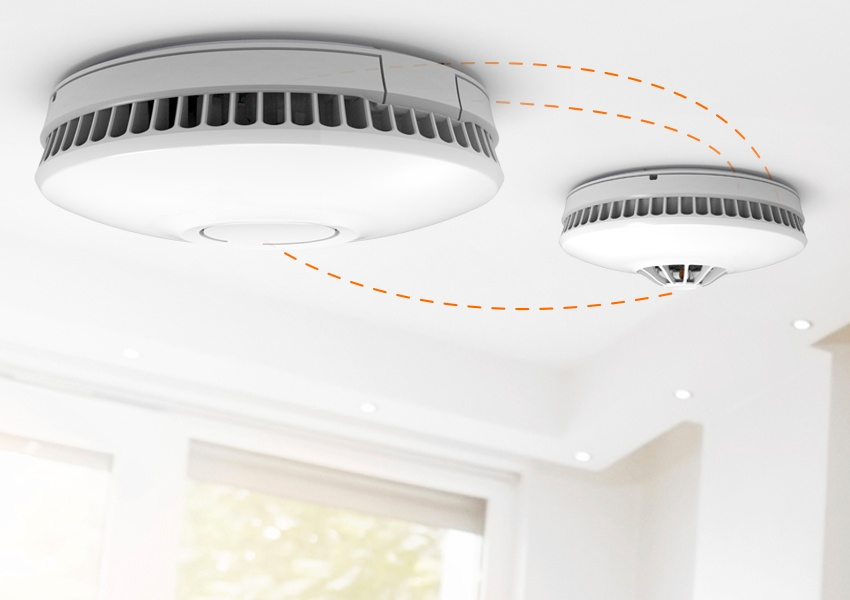
Andy Greenhorn, FireAngel’s Specification Manager for Scotland and Ireland, shares his fire safety recommendations on how to comply with latest regulations affecting all households in Scotland.
Andy shares his expertise and advises how to achieve efficient and cost-effective compliance in line with the updated Scottish Tolerable Standard, whilst also exploring the importance of specifying IoT technologies to effectively protect and future proof properties and residents.
Tell us about your role at FireAngel.
For the past 20 years, I have succeeded within the social housing market and since joining FireAngel in 2016 as the Specification Manager for Scotland and Ireland, I have developed the area and built our Scottish team.
As part of my role at FireAngel, I’m also heavily involved in working closely with our Connected Division presenting our Connected Homes offering for the social housing market. I work closely with social housing providers throughout Scotland and Ireland to understand their needs and together tailor solutions that can continuously be developed and enhanced to support their requirements. This is to not only ensure they achieve compliance with both current and future legislative updates, but ensure each tenant is provided with the highest standards in fire protection.
What types of housing will be affected by the new standard?
The latest regulations will affect all households across Scotland, including new build developments and existing dwellings. This includes both private and rented properties, which must comply with the new Standard by February 2021, with a view of extending.
Please explain the requirements of the new standard
The updated Scottish Tolerable Standard requires all properties to have an interlinked fire and smoke alarm system. This must be supported by adequate carbon monoxide (CO) protection if there is a flue-burning appliance or flue present within the property.
The regulations do not only apply to the installation of new alarms – any existing alarms must also be reviewed under the new guidance to ensure they meet the revised criteria.

How many alarms will be required per property to achieve compliance?
In order to achieve compliance, the properties must have one smoke alarm installed in the room most frequently used for general living purposes, such as the living room.
An additional smoke alarm must also be fitted in every circulation space on each storey, including hallways and landings, while a heat alarm should be installed in each kitchen. To comply with the latest regulations, all smoke and heat alarms should be ceiling mounted and interlinked.
Finally, a CO alarm must be installed in every room where there is a carbon-fuelled appliance, such as a boiler, fire or stove.
What type of alarms should you specify to facilitate interlinking?
Under the new regulations, both mains-powered or 10 year sealed long-life battery powered alarms are suitable, as long as they facilitate either hardwired or wireless interlinking. The mains-powered alarms must comply with a Grade D1 Specification, while the battery powered alarms must meet the requirements of a Grade F1 Specification, in line with the latest Scottish Regulations.
FireAngel’s Specification Range of mains-powered and battery powered smoke, heat and CO alarms can support providers in achieving compliance with the new Standard as the suite of devices can be interlinked together to form a hybrid network.
This is particularly useful for projects where hardwiring isn’t feasible, as the network can be quickly extended wirelessly, whilst also offering the opportunity for additional safety products to be added to the system at a later date.
The wireless interlinking of alarms can be achieved by simply fitting a Smart RF Radio Module into each device, interlinking up to 50 devices onto a private network so that when one alarm sounds, they all sound, providing the earliest possible warning of a potential fire or CO event.
The type of sensing technology utilised within the alarm should also be considered to ensure each tenant / property is provided with the highest levels of fire protection, regardless of the fire type. FireAngel is the only manufacturer throughout the UK and Ireland to currently offer both mains-powered and battery powered smoke alarms that are Multi-Sensor.
Its innovative Thermoptek Multi-Sensor technology is used by over 90% of the UK’s Fire and Rescue Services and delivers a faster reaction to all types of fires, giving social housing providers the confidence they are providing tenants with the highest standards in fire safety.

Why is this new standard being enforced?
The improved legislation outlined within the Housing (Scotland Act) and Scottish Housing Quality Standard is being enforced in response to the Grenfell Tower fire to help reduce deaths in household fires. It aims to provide individuals living within all types of properties with an increased level of protection.
How can you futureproof properties against other regulations?
Whilst achieving compliance with the new Standard ahead of the upcoming deadline is the priority for many housing providers across Scotland, the legislative updates also present the opportunity to futureproof their entire housing stock against new regulations that may come into force at a later date.
As FireAngel’s Specification Range of smoke, heat and CO alarms feature Smart RF technology, the addition of a Smart RF Radio Module into each alarm activates a cloud-based gateway, FireAngel Connected, which provides remote real time monitoring of each alarm in every property.
This takes the level of fire protection available one step further, as the alarms are wirelessly sending key data across the private network, which enables social housing providers to gain instant access to essential information regarding each alarm, including current status, alarm history, replacement dates and network health.
This not only ensures adherence with the new standard but enables providers to cost-effectively upgrade their fire safety by understanding the level of risk each property / tenant presents.
What trends/technologies are you seeing for the future?
The continuous evolution of IoT and AI is facilitating a new generation of fire safety technologies that are revolutionising asset and audit management for social housing providers and their residents, whilst helping to eliminate any physical barriers in communication that may previously have existed.
Over the next few years we will see a real increase in the adoption of connected technologies, such as FireAngel’s unique patented algorithm, FireAngel Predict, which identifies properties that pose a high level of risk with regard to real fire events, by highlighting potentially dangerous patterns of behaviour.
Technologies such as this will provide a transformative approach to fire safety for the social housing sector.
How have you supported Scottish housing associations in achieving compliance with the new standards?
Since February 2019, myself and the Scottish team have supplied an extremely high percentage of heat and carbon monoxide alarms to social housing providers throughout Scotland.
We have adopted a partnership approach with each provider and its team, working closely to assist them in achieving compliance in line with the new legislative Standard. From initial trials, right through to supply, installation and aftersales guidance, our team of experts have delivered hands-on support in the form of dedicated training, site visits and inspections. This ensures providers not only achieve adherence with the new regulations but are specifying efficient solutions that successfully future proofs their housing stock for years to come.









